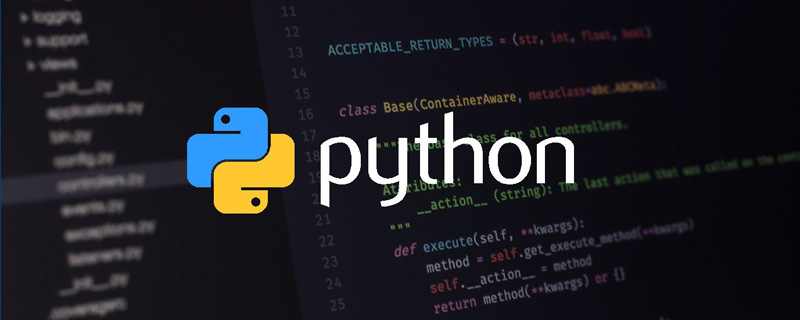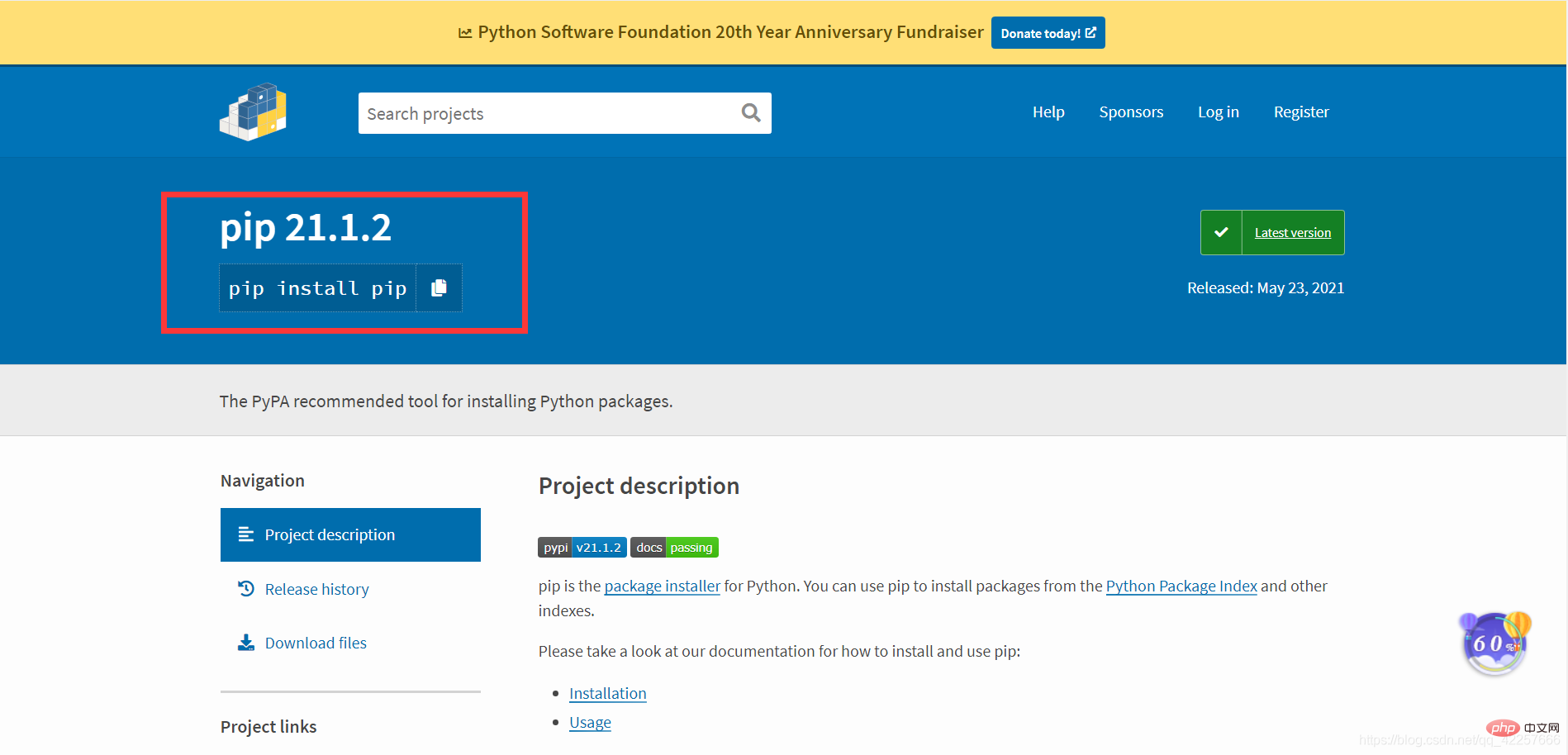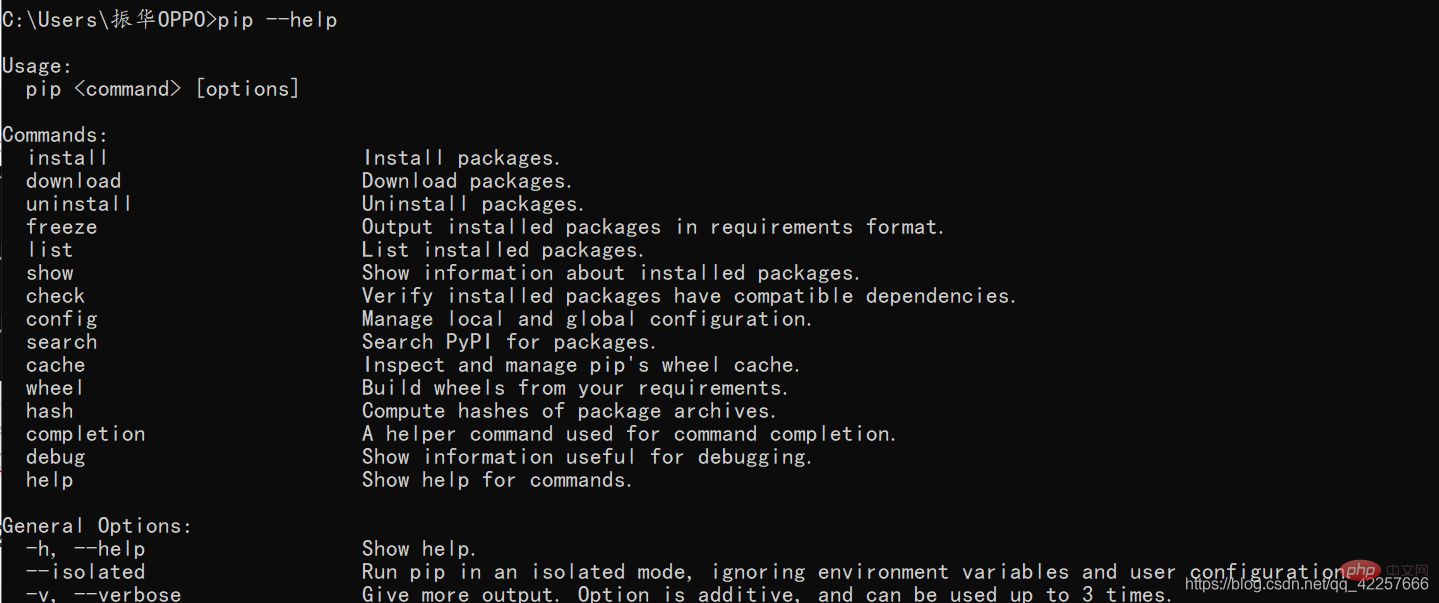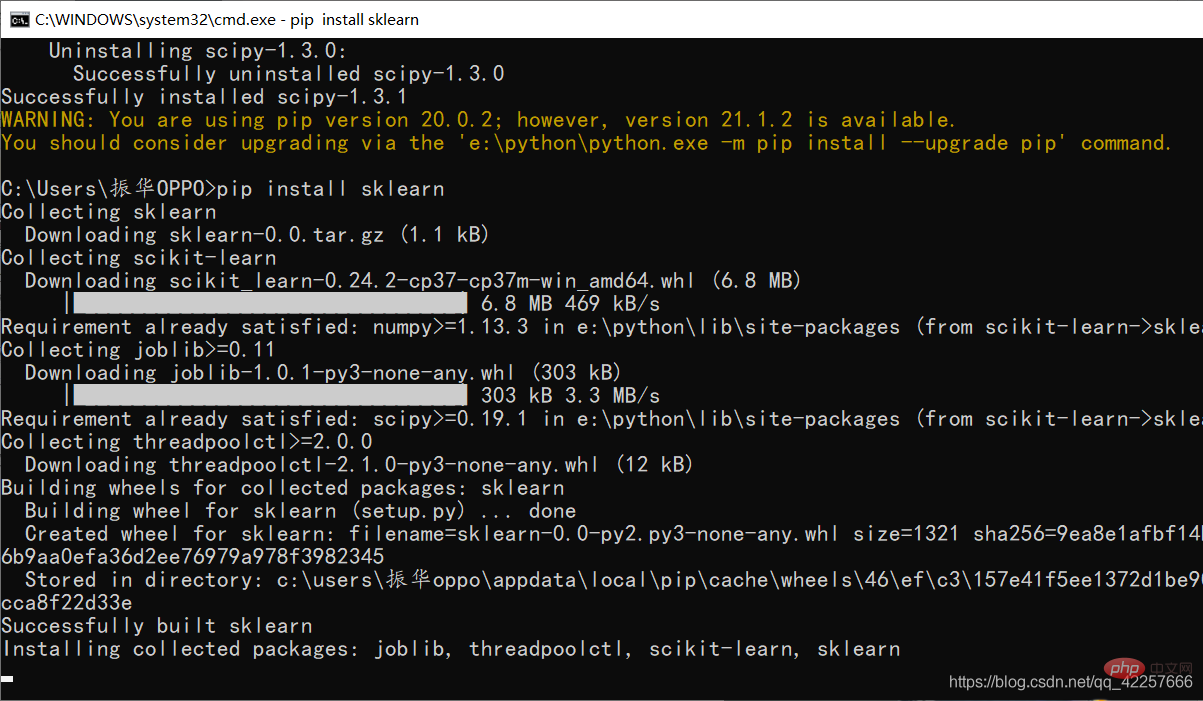 Backend Development
Backend Development
 Python Tutorial
Python Tutorial
 One article to complete the installation and use of pip in Python
One article to complete the installation and use of pip in Python
One article to complete the installation and use of pip in Python
This article brings you relevant knowledge about python, which mainly introduces issues related to the installation and use of pip, including upgrading pip, displaying installation package information, and viewing specified packages. Let’s take a look at the detailed information and so on. I hope it will be helpful to everyone.

Recommended learning: python video tutorial
1. Brief introduction
pip is a Python package management tool. This tool provides the functions of searching, downloading, installing and uninstalling Python packages. All the packages you use now either come with them or are installed through pip. Python 2.7.9 or Python 3.4 or above comes with the pip tool.

2. Download and install
You can use the command pip --version to determine whether it has been installed: 
If you still If it is not installed, you can use the following two methods to install it:
1. Python comes with a ensurepip module, which can install pip in the Python environment. Enter the following command in cmd
py -m ensurepip --upgrade
2. You can also download a Python script and use the command line boot logic to install pip.
- Download the script to your Python folder
- win cmd to open the terminal and switch to the directory of your script
- Enter the command and press Enter
py get-pip.py
3. The most commonly used commands
1. Display version and path
pip --version

2. Get help
pip --help
3. Upgrade pip
pip install -U pip
ps:升级需谨慎,经常看到pip提醒升级,然后输入命令回车,系统开始下载最新版安装包, 准备安装前卸载了旧版pip,然后新版又报错无法安装,只好又重装。
4. Installation package
pip install SomePackage #The latest version
pip install SomePackage==1.0.4 #Specify the version
pip install 'SomePackage>=1.0.4' #The smallest version
For example, I want to install sklearn , enter pip install sklearn, the latest version of the package 
5, upgrade package
pip install --upgrade SomePackage
升级指定的包,通过使用==, >=, , <h2 id="Uninstall-package">6. Uninstall package</h2><p><strong><span style="color:blue">pip uninstall SomePackage</span></strong></p><h2 id="Search-package">7. Search package</h2><p><strong><span style="color:blue">pip search SomePackage</span></strong></p><h2 id="Display-installation-package-information">8. Display installation package information</h2><p><strong><span style="color:blue">pip show SomePackage</span></strong><br><img src="/static/imghw/default1.png" data-src="https://img.php.cn/upload/article/000/000/067/242888d8bfa43019edc970c8ab5edb0f-5.png" class="lazy" alt="One article to complete the installation and use of pip in Python"></p><h2 id="List-installed-packages">9. List installed packages</h2><p><strong><span style="max-width:90%">pip list</span></strong><br><img src="/static/imghw/default1.png" data-src="https://img.php.cn/upload/article/000/000/067/7361c4a9e66a41cb77df500fca51e01a-6.png" class="lazy" alt="One article to complete the installation and use of pip in Python"></p><h2 id="View-detailed-information-of-the-specified-package">10. View detailed information of the specified package</h2><p><strong>##pip show -f SomePackage<span style="max-width:90%"></span></strong><br><img src="/static/imghw/default1.png" data-src="https://img.php.cn/upload/article/000/000/067/7361c4a9e66a41cb77df500fca51e01a-7.png" class="lazy" alt="One article to complete the installation and use of pip in Python"></p>Recommended learning:<p> python video tutorial<a href="https://www.php.cn/course/list/30.html" target="_blank"></a></p>
The above is the detailed content of One article to complete the installation and use of pip in Python. For more information, please follow other related articles on the PHP Chinese website!

Hot AI Tools

Undresser.AI Undress
AI-powered app for creating realistic nude photos

AI Clothes Remover
Online AI tool for removing clothes from photos.

Undress AI Tool
Undress images for free

Clothoff.io
AI clothes remover

AI Hentai Generator
Generate AI Hentai for free.

Hot Article

Hot Tools

Notepad++7.3.1
Easy-to-use and free code editor

SublimeText3 Chinese version
Chinese version, very easy to use

Zend Studio 13.0.1
Powerful PHP integrated development environment

Dreamweaver CS6
Visual web development tools

SublimeText3 Mac version
God-level code editing software (SublimeText3)

Hot Topics
 Is the conversion speed fast when converting XML to PDF on mobile phone?
Apr 02, 2025 pm 10:09 PM
Is the conversion speed fast when converting XML to PDF on mobile phone?
Apr 02, 2025 pm 10:09 PM
The speed of mobile XML to PDF depends on the following factors: the complexity of XML structure. Mobile hardware configuration conversion method (library, algorithm) code quality optimization methods (select efficient libraries, optimize algorithms, cache data, and utilize multi-threading). Overall, there is no absolute answer and it needs to be optimized according to the specific situation.
 Is there any mobile app that can convert XML into PDF?
Apr 02, 2025 pm 08:54 PM
Is there any mobile app that can convert XML into PDF?
Apr 02, 2025 pm 08:54 PM
An application that converts XML directly to PDF cannot be found because they are two fundamentally different formats. XML is used to store data, while PDF is used to display documents. To complete the transformation, you can use programming languages and libraries such as Python and ReportLab to parse XML data and generate PDF documents.
 How to convert XML files to PDF on your phone?
Apr 02, 2025 pm 10:12 PM
How to convert XML files to PDF on your phone?
Apr 02, 2025 pm 10:12 PM
It is impossible to complete XML to PDF conversion directly on your phone with a single application. It is necessary to use cloud services, which can be achieved through two steps: 1. Convert XML to PDF in the cloud, 2. Access or download the converted PDF file on the mobile phone.
 What is the function of C language sum?
Apr 03, 2025 pm 02:21 PM
What is the function of C language sum?
Apr 03, 2025 pm 02:21 PM
There is no built-in sum function in C language, so it needs to be written by yourself. Sum can be achieved by traversing the array and accumulating elements: Loop version: Sum is calculated using for loop and array length. Pointer version: Use pointers to point to array elements, and efficient summing is achieved through self-increment pointers. Dynamically allocate array version: Dynamically allocate arrays and manage memory yourself, ensuring that allocated memory is freed to prevent memory leaks.
 How to control the size of XML converted to images?
Apr 02, 2025 pm 07:24 PM
How to control the size of XML converted to images?
Apr 02, 2025 pm 07:24 PM
To generate images through XML, you need to use graph libraries (such as Pillow and JFreeChart) as bridges to generate images based on metadata (size, color) in XML. The key to controlling the size of the image is to adjust the values of the <width> and <height> tags in XML. However, in practical applications, the complexity of XML structure, the fineness of graph drawing, the speed of image generation and memory consumption, and the selection of image formats all have an impact on the generated image size. Therefore, it is necessary to have a deep understanding of XML structure, proficient in the graphics library, and consider factors such as optimization algorithms and image format selection.
 How to convert xml into pictures
Apr 03, 2025 am 07:39 AM
How to convert xml into pictures
Apr 03, 2025 am 07:39 AM
XML can be converted to images by using an XSLT converter or image library. XSLT Converter: Use an XSLT processor and stylesheet to convert XML to images. Image Library: Use libraries such as PIL or ImageMagick to create images from XML data, such as drawing shapes and text.
 How to open xml format
Apr 02, 2025 pm 09:00 PM
How to open xml format
Apr 02, 2025 pm 09:00 PM
Use most text editors to open XML files; if you need a more intuitive tree display, you can use an XML editor, such as Oxygen XML Editor or XMLSpy; if you process XML data in a program, you need to use a programming language (such as Python) and XML libraries (such as xml.etree.ElementTree) to parse.
 Recommended XML formatting tool
Apr 02, 2025 pm 09:03 PM
Recommended XML formatting tool
Apr 02, 2025 pm 09:03 PM
XML formatting tools can type code according to rules to improve readability and understanding. When selecting a tool, pay attention to customization capabilities, handling of special circumstances, performance and ease of use. Commonly used tool types include online tools, IDE plug-ins, and command-line tools.





